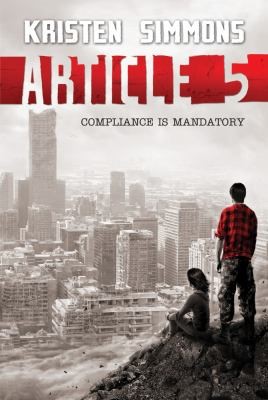
Presidential Proclamation
On November 27, 1941, President Franklin D. Roosevelt issued a proclamation designating December 15 as Bill of Rights Day. The proclamation read in part:

The first ten amendments, the great American charter of personal liberty and human dignity, became a part of the Constitution of the United States on the fifteenth day of December, 1791. It is fitting that the anniversary of its adoption should be remembered by the Nation which…has enjoyed the immeasurable privileges which that charter guaranteed: the privileges of freedom of religion, freedom of speech, freedom of the press, freedom of assembly, and the free right to petition the Government for redress of grievances….The fifteenth day of December, 1941, is therefore set apart as a day of mobilization for freedom and for human rights, a day of remembrance of the democratic and peaceful action by which these rights were gained, a day of reassessment of their present meaning and their living worth.
(Proclamation 2524—Bill of Rights Day at https://www.presidency.ucsb.edu/documents/proclamation-2524-bill-rights-day)
In his message, Roosevelt described the Bill of Rights as “the great American charter of personal liberty and human dignity.” (Jessiekratz, “Bill of Rights Day,” December 14, 2016, https://prologue.blogs.archives.gov/2016/12/14/bill-of-rights-day/?subscribe=pending#blog_subscription-3)
In his radio address that day, Roosevelt commended those nations championing the rights defined in the charter and condemned countries like Nazi Germany intent on destroying those rights. His proclamation came just eight days after the Japanese attack on Pearl Harbor and America’s entry into World War II.

In December 15, 1952, President Harry S Truman gave the remarks for the unveiling of the Bill of Rights along with the U.S. Constitution and the Declaration of Independence on exhibit in the National Archives. Truman pronounced: “we are assembled here on this Bill of Rights Day to do honor to the three great documents which, together, constitute the charter of our form of government.” (Jessiekratz, “Bill of Rights Day,” December 14, 2016, https://prologue.blogs.archives.gov/2016/12/14/bill-of-rights-day/?subscribe=pending#blog_subscription-3)
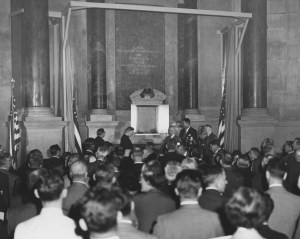
Every year since 1962, the president has recognized Bill of Rights Day. The proclamation frequently has been combined with a proclamation on Human Rights Day and Week, commemorating the United Nations General Assembly’s adoption of the Universal Declaration of Human Rights on December 10, 1948.

On April 11, 1998, the Virginia General Assembly approved House Resolution 1191 officially recognizing Bill of Rights Day.
What Are The Bill of Rights?
The Bill of Rights are the first ten amendments to the U.S. Constitution which the congress passed on September 25, 1789 as authorized by Article V of the Constitution. There were those in the early republic who opposed a strong central government. House of Representatives members, particularly from Massachusetts, Virginia, and New York, were reacting to calls for amendments to the Constitution that came up during its ratification. Indeed, their support of the Constitution only was in anticipation that undeniable protections for individual rights would be added to it. Since it was customary in Anglo-American culture to define and protect individual rights, it’s little wonder that the first Congress modified the Constitution by appending what became known as the Bill of Rights.

Virginia native James Madison, the youngest member of the Continental Congress who later became the fourth U.S. President, took the lead in writing the amendments although he initially opposed the idea. He studied various suggestions and models from state constitutions. George Mason’s opinions assisted in shaping the new republic’s founding documents. “The words he used when writing the Virginia Declaration of Rights and the Virginia Constitution of 1776 inspired the nation’s Declaration of Independence and Bill of Rights.” (“George Mason,” Bill of Rights Institute, https://billofrightsinstitute.org/educate/educator-resources/founders/george-mason/). Ultimately, the states ratified ten amendments in 1791.
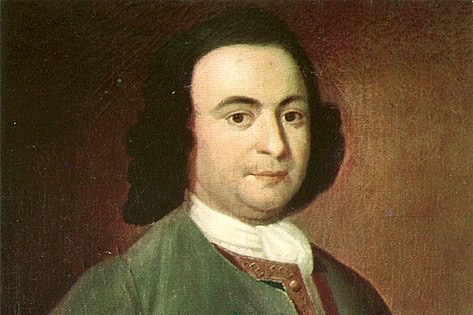
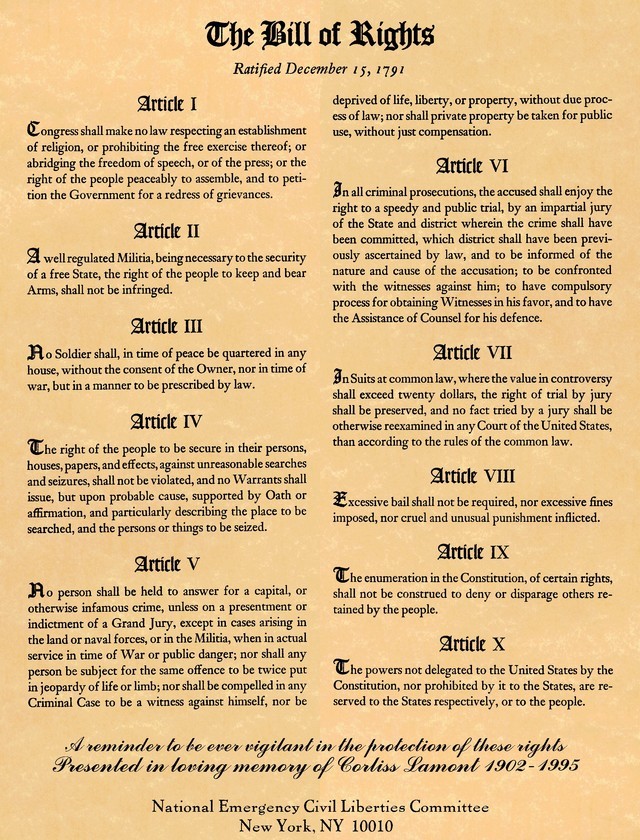
The Bill of Rights are the emblem and cornerstone of American principles of individual liberties, limited government, and the rule of law. Most of the amendments affect legal protections for people accused of crimes.
Rights and Protections Guaranteed in the Bill of Rights: Briefly Explained
| Amendment | Rights and Protections |
| First | Freedom of speech Freedom of the press Freedom of religion Freedom of assembly Right to petition the government |
| Second | Right to bear arms |
| Third | Protection against housing soldiers in civilian homes |
| Fourth | Protection against unreasonable search and seizure Protection against the issuing of warrants without probable cause |
| Fifth | Protection against trial without indictment double jeopardy self-incrimination property seizure |
| Sixth | Right to a speedy trial Right to be informed of charges Right to be confronted by witnesses Right to call witnesses Right to a legal counsel |
| Seventh | Right to trial by jury |
| Eighth | Protection against excessive bail excessive fines cruel and unusual punishment |
| Ninth | Rights granted in the Constitution shall not infringe on other rights. |
| Tenth | Powers not granted to the Federal Government in the Constitution belong to the states or the people. |
Understanding the Bill of Rights
Today as ever the Bill of Rights is a dynamic force in American life and a key part of constitutional law. The sense of its protections are debated fiercely as evidenced for instance in the controversy over the right to bear arms (Second Amendment). On a broader scale, the application of the Bill of Rights to safeguard individuals from local, state, and federal government abuse still is an unresolved feature of constitutional understanding. Initially, the Bill of Rights was intended only to control the federal government. That all changed with the 1868 Fourteenth Amendment‘s assurance that no state can divest its citizens of the Bill of Rights’ protections. Even the U.S. Supreme Court has not ruled absolutely whether or not the Bill of Rights in its entirety applies to all levels of government.

The National Archives has produced Congress Creates the Bill of Rights which contains three parts: an eBook, a mobile app for tablets, and online resources for teachers and students. Each offers a clear way of discovering how in 1789 the First Congress proposed amendments to the Constitution (https://www.archives.gov/legislative/resources/bill-of-rights.) To lean more click https://youtu.be/5SkrtZ8sFkU.
Some other links to explore are:
“A 3-minute guide to the Bill of Rights,” https://youtu.be/yYEfLm5dLMQ.
“Amending America: How Do We Amend?” https://youtu.be/c_wbxHmSQKc.
“Article V for Dummies: The Amendment Procedure Explained,” https://www.youtube.com/watch?v=WCzjXaFl79E
Find out more about Virginia’s ratification of the Bill of Rights at https://www.docsteach.org/documents/document/virginias-ratification-of-the-bill-of-rights.
How to Celebrate Bill of Rights Day?
One way to celebrate is to register for “The Bill of Rights at the Schoolhouse Gate” offered on Tuesday, December 15, 2020 by the National Archives Museum and iCivics where panelists will discuss whether or not the “rights guaranteed by the Bill of Rights apply to public schools.” (https://www.archives.gov/calendar/event/the-bill-of-rights-at-the-schoolhouse-gate0.
In addition to the aforementioned resources, the National Archives has Teaching and Learning Resources like:
- DocsTeach: Amending America helps educators find primary sources from the National Archives documenting the creation and structure of our government.
- James Madison debates the Bill of Rights
- Professional development for educators via webinar
- eBook: Congress Creates the Bill of Rights
- Distance learning programs for the K-12 classroom
- eBook: Putting the Bill of Rights to the Test student workbook
“The Bill of Rights and You” explores how the Bill of Rights was created and what it means for us today. You can download the high-resolution posters at www.archives.gov/amending-america/visit/bill-of-rights-pop-up.



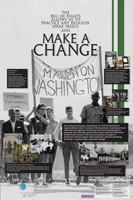
The National Constitution Center offers live virtual programs and resources. Check out https://constitutioncenter.org/learn/civic-calendar/bill-of-rights-day. Also at the National Constitution Center, Dr. Steve Frank celebrated Bill of Rights Day with a blog post about James Madison. Explore it out and other ways the center has celebrated at https://billofrightsinstitute.org/bill-of-rights-day-celebrations-around-the-nation/.
Discover “Happy Bill of Rights Day! James Madison, the Bill of Rights & Political Compromise” at https://constitutingamerica.org/james-madison-the-bill-of-rights-political-compromise/.
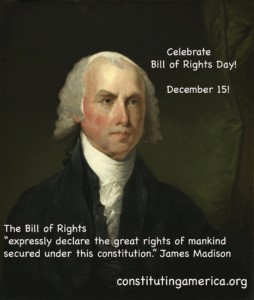
The Richmond Public Library has a number of books and other resources about the Bill of Rights. Below are just a few for you to explore.







